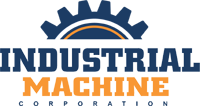Mastering the Best Production Machine for Your Manufacturing Success
In an era where global manufacturing dynamics are rapidly evolving, mastering the best production machine is crucial for achieving sustainable success. According to a report by the International Federation of Robotics, global sales of industrial robots have increased by over 12% annually, reflecting a significant shift towards automation in manufacturing processes.

As China continues to lead the charge in this domain, being recognized as a powerhouse of production, the implementation of advanced production machines is pivotal. Not only do these machines enhance efficiency, but they also contribute to improved quality and reduced lead times, making them indispensable assets for manufacturers looking to compete on a global scale.
By focusing on the right production machines, companies can position themselves at the forefront of innovation and productivity, directly impacting their bottom line and long-term growth prospects.
Understanding the Importance of High-Quality Production Machines in Manufacturing
In today's rapidly evolving manufacturing landscape, the significance of high-quality production machines cannot be overstated. As China's economy shifts towards high-quality development, embracing green and innovative manufacturing practices becomes increasingly crucial. According to experts, the nation's industrial sector is projected to grow significantly, with manufacturing expected to contribute nearly 20% to Germany's total GDP by 2024, while China is not far behind, emphasizing advanced technologies like AI to enhance production efficiency.

The push for high-caliber production machines is integral to achieving sustainable growth. With the emphasis on "智造 + 绿造," or smart and green manufacturing, industries are witnessing a robust demand for machinery that not only increases output but also reduces environmental footprints. Reports indicate that sectors like construction are experiencing a revival, reflected in the uptick in the excavator index, signaling a resurgence in infrastructure projects driven by advanced machinery tailored to new-age manufacturing needs. As traditional industries undergo transformation, the adoption of cutting-edge production machines will undoubtedly play a pivotal role in setting the foundation for long-term success.
Key Features to Look for in China’s Leading Production Machinery
In today’s rapidly evolving manufacturing landscape, selecting the right production machinery is critical for operational success. As China continues to dominate global manufacturing—accounting for over 28% of the world's output according to Statista—it’s essential to understand the key features that define top-tier production equipment. Leading machinery often incorporates advanced automation capabilities, such as AI-driven monitoring systems that enhance precision and reduce downtime. Reports indicate that implementing automation can increase productivity by up to 30%, making it an imperative feature for manufacturers looking to stay competitive.

Another vital aspect to consider is energy efficiency. According to the International Institute for Sustainable Development, energy-efficient machines can reduce operational costs by 20-40%. Features like variable speed drives and energy recovery systems are indicative of superior machinery that contributes to both lower energy consumption and sustainability efforts. Additionally, manufacturers should prioritize machinery with robust after-sales support and ease of maintenance, which are crucial for minimizing disruptions and ensuring consistent production flow. Investing in these key attributes not only improves manufacturing capabilities but also positions companies for long-term success in the competitive industrial sector.
Case Studies: Success Stories from Top Chinese Factories
In the highly competitive landscape of manufacturing, China's factories have set remarkable benchmarks for success. Recent reports from industry analysis firm McKinsey & Company highlight that Chinese manufacturers have increased productivity by up to 50% over the past decade through smart automation and machine optimization. These advancements underscore the importance of selecting the right production machinery in this quest for excellence.
One compelling case study features a leading electronics manufacturer that utilized advanced robotics and AI-driven machines, resulting in a 40% reduction in production time and a 30% decrease in operational costs. A similar story comes from a textile factory that implemented predictive maintenance tools, significantly minimizing downtime and boosting output levels. These examples illustrate how smart investments in technology can translate into tangible benefits.
Tip: When considering production machines, always assess the latest technological innovations to stay ahead of the curve. Additionally, prioritize flexible machinery that can adapt to various production needs. Another tip is to evaluate the total cost of ownership, which includes maintenance and operational efficiency, to ensure you're making a wise investment in your manufacturing future.
Building Trust: How Chinese Machinery is Gaining Global Recognition
Chinese machinery has rapidly evolved, gaining global recognition for its reliability and efficiency. As international markets shift towards seeking cost-effective and high-quality manufacturing solutions, Chinese manufacturers have stepped up their game. The infusion of advanced technology and adherence to international standards have significantly enhanced the reputation of Chinese machinery. This shift is not merely a trend; it reflects a profound change in how the world perceives production equipment from China.
Building trust in this sector hinges on transparency and collaboration. Chinese companies are increasingly engaging with international partners to ensure their machinery meets specific requirements and standards. This proactive approach fosters confidence among global buyers, proving that quality and accountability are at the forefront of production. The growing presence of Chinese machinery in various industries—from automotive to electronics—demonstrates its capacity to meet diverse manufacturing needs, paving the way for a new era of global partnerships. As the world embraces this transformation, Chinese manufacturers are poised to play a pivotal role in shaping the future of production.
Mastering the Best Production Machine for Your Manufacturing Success
| Machine Type | Efficiency (Units/Hour) | Energy Consumption (kWh) | Cost (USD) | Warranty Period (Years) |
|---|---|---|---|---|
| CNC Machining Center | 60 | 10 | 50,000 | 3 |
| Injection Molding Machine | 120 | 15 | 75,000 | 5 |
| Laser Cutting Machine | 80 | 20 | 90,000 | 4 |
| 3D Printer | 30 | 5 | 15,000 | 2 |
| Robotic Arm | 150 | 12 | 120,000 | 6 |
Future Trends in Manufacturing Technology and Their Impact on Production Efficiency
The landscape of manufacturing technology is evolving rapidly, and staying ahead of future trends is crucial for enhancing production efficiency. One of the most significant advancements is the integration of smart manufacturing, facilitated by the Internet of Things (IoT). This technology not only allows machines to communicate with each other but also provides real-time data analytics. Manufacturers can utilize this data to anticipate maintenance needs, streamline operations, and reduce downtime, ultimately resulting in a more efficient production process.
Another emerging trend is the increased use of automation and robotics within manufacturing facilities. Advanced robots can perform repetitive tasks with greater precision and speed than human workers, leading to significant productivity gains. Furthermore, with advancements in machine learning and artificial intelligence, these robotic systems are becoming more adaptable, enabling them to handle complex tasks and collaborate with human operators seamlessly. The shift towards automation not only boosts output but also enhances worker safety by taking on hazardous tasks, thereby fostering a more efficient and effective manufacturing environment.
Future Trends in Manufacturing Technology and Their Impact on Production Efficiency
This chart illustrates the projected impact of emerging manufacturing technologies on production efficiency for the upcoming years.
